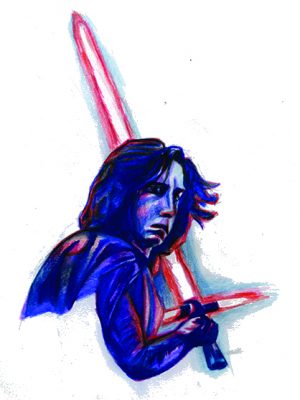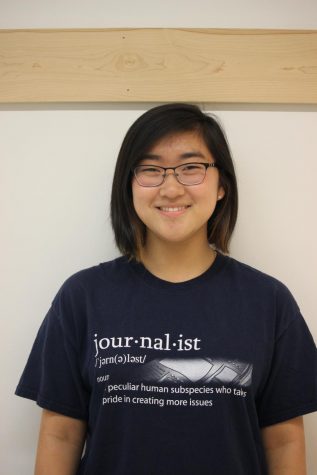“The Dragon Prince” flies with fleeing nostalgia
October 10, 2018
“The Dragon Prince” is the new Netflix original series that debuted on Sept. 14 — its existence is due to the creative direction of the very same team that made the childhood favorite, and possibly even current favorite, animated series “Avatar: The Last Airbender,” inspiring unadulterated, wanton nostalgia while providing sweet character relationships and revived life lessons.
I went into this series without the important knowledge of the background of the show’s creation, which let me experience a true first impression of the show’s content. I did fall victim to thinking some of the show’s systemic plot devices and moments of truth were cliché and unconvincing, but it makes sense, due to the fact its main audience is still meant for children.
But I also did make it through the entire first season in one sitting.
The show does only have nine episodes, each around the 25-minute mark, so it isn’t a terribly heavy binge-watch, however. It feels about as long as watching the other “Avatar” movie, the one with the blue people.
Learning the creative direction that influenced this show ex post facto, “The Dragon Prince” did have some quintessential “Avatar: The Last Airbender” qualities.
The two shows are both considered to be part of the fantasy genre, but “The Dragon Prince” sticks to more traditional elements of a fantasy world. In the first episode, it’s established that there is a war, long and never-ending, per the usual, caused by humans. The war is the result of a division between two realms. Natural Magic, which belongs to the elves and other magical creatures, is derived from six Primal Sources: the Sun, the Moon, the Stars, the Sky, the Ocean, and the Earth. The humans are the creators of Dark Magic, and use it to kill the King of the Dragons, who had guarded the division between the magical realms, and to also destroy his egg heir. The event launched the world into a long drawn out war motivated by cyclical justice and vengeance, and sets up the purpose for our protagonists’ collective hero’s journey.
Naming the six natural sources of magic in “The Dragon Prince” also feels eerily similar to the four elements that make up the famous “Avatar: The Last Airbender” intro.
“Water. Earth. Fire. Air,” the opening theme booms.
“Also the Sun, Moon, and Stars!” “The Dragon Prince” pipes up in the back.
The story zooms in on its protagonists in a rather pragmatic way: royal Step-Prince Callum, who is so hopelessly human; his younger step-brother, Prince Ezran, who is the true heir to the throne; and Rayla, who is an elf, specifically a Moonshadow assassin who has an abnormal amount of empathy, and thus has not killed anyone. We can also throw in Prince Ezran’s snazzy animal sidekick, Bait. He’s technically a “Glow Toad,” but he can be somewhat more accurately described as a chubby, color-changing, glowing pug-toad. He mirrors the purpose of Appa, a sky bison, in “Avatar: The Last Airbender,” but is sassier and seems to care significantly less.
The three of them form an “unlikely bond,” as stated in the Netflix press release about the show, and their journey is crafted from a heavy dose of childhood idealism and coming-of-age, all the while “embarking on an epic quest to bring peace to their warring lands” (this is also in the Netflix press release, so I’m not counting it as a spoiler). This unlikely union brings light to the flaws of both sides of the war, complicating the expositional narrative of dark magic plus humans equal evil, which is an idea that underlies many divided, warring worlds with racist undertones. It also establishes the subjective nature of the defiance the princes act on, as the history of the war causes generational differences between what their parents believe, but also how much the princes believe in the stories they feed them. A classical story of characters unable to fit in within the societies they’re tied to, but start to understand themselves together.
Basically, the show does a good job establishing a context for the characters’ choices and relationships, and makes the plot of the show meaningful, rather than an arbitrary mix of fantasy epics and humor.
As a children’s television show, the portrayal of the characters’ personalities and relationships between the characters cannot be more important – in this war-torn world, the balance between light-hearted humor and dark subjects of death and corruption is an intricate relationship the creators managed well. It is because of this that the audience can laugh in the show’s high-tense situations, such as Rayla’s capability to track the princes, into a hidden room because the secrets of the lock were revealed by the little jam handprints Prince Ezran made due to his tart-stealing excursion in the morning.
There is also a special moment of representation in this show through the character General Amaya, who is the prince’s aunt. It is hard to determine whether she is deaf, or simply mute, as sometimes it seems like she can respond to something someone said out loud, while at other times the other characters would need to use sign language to communicate with her. The point is, she is a powerful military figure who, albeit having a translator by her side, is able to act as a leader and even threaten people. There are some monologues she gives to the princes’ and her commander which aren’t translated, and through my excitement of seeing this representation, I was somehow completely okay with not knowing entirely what she was saying.
“The Dragon Prince” is an unexpected breath of nostalgia as we’re reminded of the ferocity to which “Avatar: The Last Airbender” took the world by storm. This new show lives up to its predecessor, exploring themes of self-acceptance and hope, but most importantly, it reflects the child-like vigor for life that pulls in an audience of all ages. The point of these stories is not to break out of any sort of clichéd mold, but to invigorate either a new, determined view of life or revive a waning hopeful one – and this will never diminish the worth of a children’s story.


